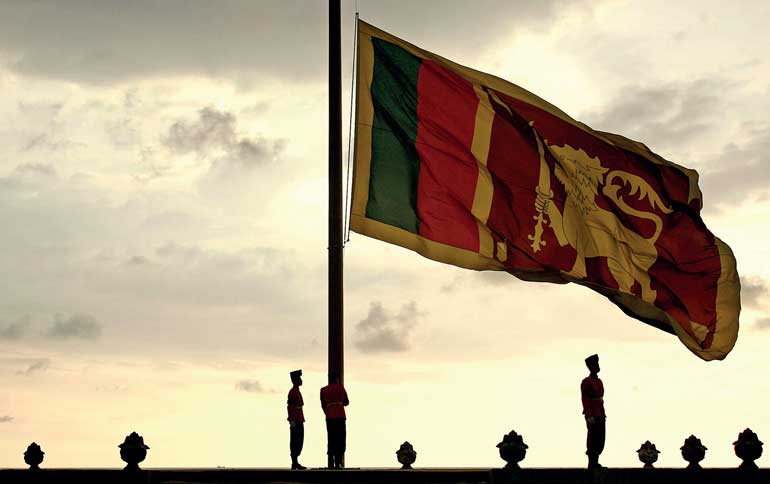Sunday Dec 14, 2025
Sunday Dec 14, 2025
Friday, 11 February 2022 00:00 - - {{hitsCtrl.values.hits}}

Our written history particularly of the colonial era from 1505-1948 should be reviewed and rewritten by top scholars with decolonised minds
Sri Lanka won freedom not in isolation but in step with the rest of the Asian countries in the aftermath of the end of the Second World War in 1945.
Many factors contributed to the collapse of the Western Colonial Domination of Asia. But the outstanding and most notable factor was the epic attack of the Japanese on Pearl Harbour on 7 December 1941, followed by Japan’s attacks on military bases in European colonies including India (Imphal and Kohima), and Ceylon. Japan ended the colonial occupation of Burma, Indonesia, Malaya, Philippines, Singapore, Hong Kong, Indo-China, Vietnam and several Pacific countries that were under foreign occupation. These blitzkrieg type Japanese victories inspired the National Liberation movements all over Asia and even Africa to come forward and fight for their freedom.
outstanding and most notable factor was the epic attack of the Japanese on Pearl Harbour on 7 December 1941, followed by Japan’s attacks on military bases in European colonies including India (Imphal and Kohima), and Ceylon. Japan ended the colonial occupation of Burma, Indonesia, Malaya, Philippines, Singapore, Hong Kong, Indo-China, Vietnam and several Pacific countries that were under foreign occupation. These blitzkrieg type Japanese victories inspired the National Liberation movements all over Asia and even Africa to come forward and fight for their freedom.
In 1939, i.e., prior to the beginning of the Second World War, the entirety of Asia was under foreign (Western) occupation bar Japan and Siam (Thailand). In varying degrees, vast swathes of Asian (and also African) territory were under the control of Western colonial powers such as Portugal, Spain, Netherlands, France, Germany, Great Britain, and finally the USA, for nearly 500 years. However, incrementally South East Asian and South Asian countries won their freedom after 1945 as a fall out from the Second World War, and with the victory of Vietnam over USA in 1975, the chapter of colonial occupation of the orient more or less came to a close.
It must be remembered that not all countries in Asia wanted to fight and liberate their countries. Some obtained their independence on a passive footing virtually on a platter i.e., without a fight on the battlefield such as Ceylon and Maldives. Others gave hell for leather. It must be noted that the countries that fought the West heroically such as Vietnam, Indonesia, Japan, and India are doing far better economically today than the countries that opted to walk the path of least resistance to foreign occupation e.g., Ceylon. Freedom did not fall from the sky to Asia. It came due to the freedom fight of Asians and their huge blood sacrifices. Japan under Prime Minister Hideki Tojo played a big role in this effort being the only major world power to declare at the beginning of Japan’s entry to the Second World War that one of its primary goals was the liberation of fellow Asians from Western imperialism. No other country either in the West or the East gave such a pledge to free people (black, brown and yellow races) then in colonial bondage.
Sri Lanka’s freedom struggle
Sri Lanka gained independence on the back of the Indian independence struggle. There was no threat of a physical nature from the locals to British occupation. It was a very passive movement confined to exchange of letters. We were very weak and incapable of giving ultimatums to the British to vacate the country. There was no push factor from our side. In contrast, there was a push factor in the Indian struggle led by Netaji Subash Chandra Bose. Bose started a march on to Delhi with Japanese military assistance, with his call ‘Delhi Chalo’. If India did not gain independence on 15 August 1947 neither Burma nor Ceylon would have been granted independence on 4 January 1948 or 4 February 1948, respectively. When Britain lost the jewel in its Crown i.e., India, it decided to vacate South Asia altogether.
Lessons from India
The Government of India has declared Netaji Subash Chandra Bose as the father of India’s freedom struggle displacing Mahatma Gandhi from a pedestal that many thought was unassailable. This represents a historic shift towards changing the grand narrative of India’s liberation from British occupation. The colonial hangover of not saying anything to displease the former masters i.e., British Raj, now appears to be a thing of the past.
The view that Mahatma Gandhi using ‘Ahimsa’ and ‘non-violence’ in his civil disobedience campaigns won freedom for India has been discarded.
It was a big myth propagated by the British and empire loyalists in India. Gandhi’s ‘Quit India’ Satyagraha campaign launched in 1942 fizzled out with no effect on the colonial Government. They saw no threat to their colonial rule from Gandhi and the Indian Congress.
Indian Mutiny
It was the threat of a mutiny from the British Indian Army soldiers, Navy and Air Force that finally convinced the Labour Government of Clement Atlee to quit India. A repeat of the Indian Mutiny of 1857 in 1946 would have ended in the slaughter of 30,000 British soldiers then resident in India by more than 2,500,000 well-trained Indian soldiers who had been discharged (demobbed) and returned to India.
The credit given to Gandhi for liberating India has now collapsed.
There was no push factor in his campaign. The rest of Asia fought. Japan in particular had a battle plan to liberate India. (‘Japan’s Master Plan for Victory: What could have been’ by Moteki Hiromichi – Tokyo: 2018). Western colonialism in Asia was ultimately defeated by force of Arms on the part of the people of Asia. The Japanese, Vietnamese, Indonesians, Burmese, Indians, Philippines, have all successfully fought the West, resisted foreign occupation and finally won. The exit of the West from the East after nearly 500 years of military adventurism and hegemonic rule is one of the defining landmarks of the 20th century.
It must be admitted however that Netaji received help from both Germany and Japan to wage war against the British then in occupation of India.
It can be asked: If Adolf Hitler did not supply a German Submarine to carry Netaji Subash Chandra Bose out of Germany and to rendezvous with a Japanese Submarine I 29 off the shores of Madagascar, which would then in turn carry him to Penang and later Japan, how would his life story have unfolded then? The level of support rendered by both Germany and Japan to Netaji to raise the Indian Legion in Germany, and the Indian National Army in Singapore, was pivotal to enable Netaji to play the role that he did eventually. Trying to be politically correct should not lead to sidelining or suppressing important facts from the narrative.
Decolonisation
We need to revise the narrative on how Sri Lanka achieved independence. We gained independence on a platter. No freedom fight in the colloquial sense of waging war on battlefields and defeating the enemy, and thereby gaining freedom from foreign occupation. Vietnam stands out in this respect. It defeated the most powerful country i.e., the USA.
Furthermore, Britain was forced to grant independence because it was heavily weakened economically and militarily by the war against Germany, and therefore was in no mood to fight more wars.
To be truly independent our minds and our institutions must be decolonised. All colonial legacies, if redundant and not necessary for Sri Lanka, should be rejected and replaced. Ideally speaking, our written history particularly of the colonial era from 1505-1948 should be reviewed and rewritten by top scholars with decolonised minds.
This principle also applies to the drawing of the national constitution. It must be done by decolonised minds as far as possible and not as a copycat exercise. It must never be treated as a Holy Book. Constitutional values should never be accepted as a substitute for civilisational values.
Patriotism and compassion for animals must be inculcated in every child from the time of kindergarten. Animal Protection education must be introduced in schools. Self-reliance must be encouraged in respect to growing more food locally especially plant-based food and more use of traditional medicine. Sri Lanka is basically an agricultural country. This country is also a Dharmic Civilisational country. This identity supersedes all other descriptions borrowed from the West such as multiculturalism and secularism, which are more explicable and better understood in the countries that they had their origins in rather than in the countries they were planted.